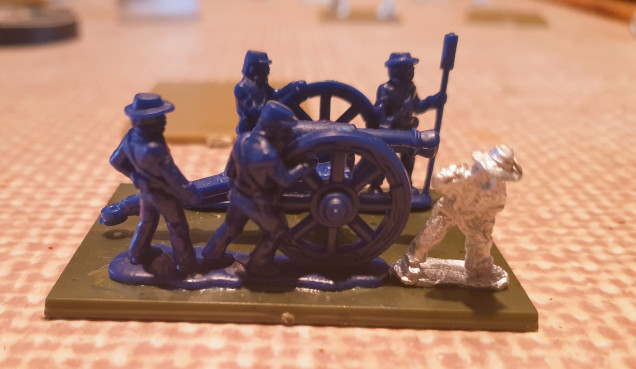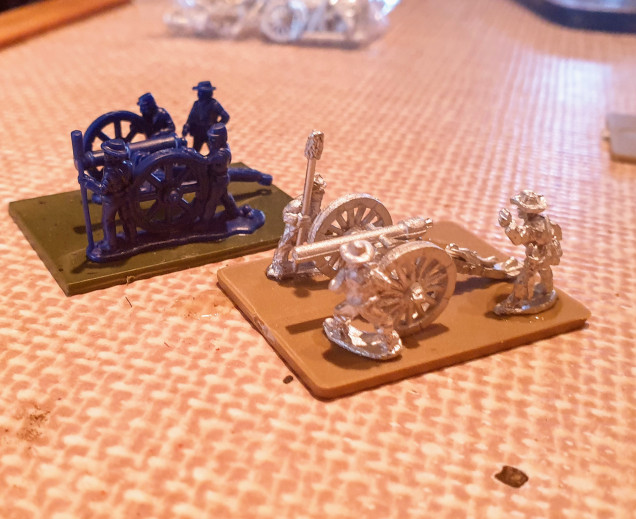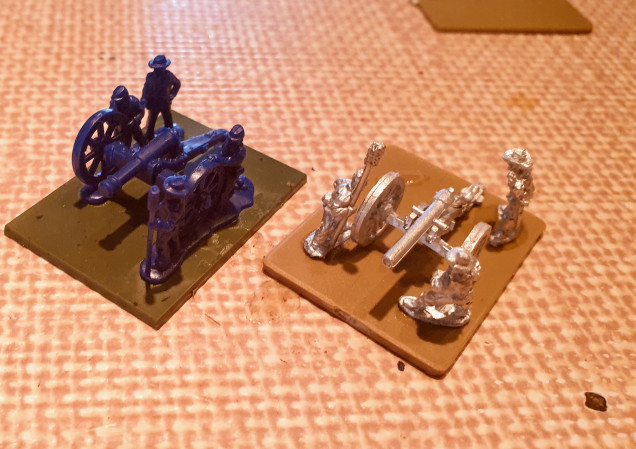
On to Richmond/Washington select your favourite option
Kallistra/Warlord Comparison.
A while back on Sundancers Unofficial Hobby Hangout, Gerry wondered if I would use any of Kallistra’s 12mm ACW range to bulk out my Army’s.
I actually did want to vary my Artillery types from the Napoleon guns depicted by the Warlord Plastic Guns. Figuring that I would be less likely to differentiate any difference in scale with Artillery. As it happens they are a match in height with the Kallistra being slightly bulkier.
The Kallistra gun sets give you a selection of barrels for Napoleon’s, Rifles and Parrot Rifles below is a Parrot with Warlord cannon.
For anyone wondering what the Difference is Napoleon Guns were basically smootjbore cannon which had changed little since the Napoleonic Wars hence the name.
Parrotts Rifled Cannons .were manufactured with a combination of cast and wrought iron. The cast iron made for an accurate gun, but was brittle enough to suffer fractures. Hence, a large wrought iron reinforcing band was overlaid on the breech to give it additional strength.[3] There were prior cannons designed this way, but the method of securing this band was the innovation that allowed the Parrott to overcome the deficiencies of these earlier models. It was applied to the gun red-hot and then the gun was turned while pouring water down the muzzle, allowing the band to attach uniformly.[3] By the end of the Civil War, both sides were using this type of gun extensively.
The 3-inch ordnance rifle, model 1861 was a wrought iron muzzle-loading rifled cannon that was adopted by the United States Army in 1861 and widely used in field artillery units during the American Civil War. It fired a 9.5 lb (4.3 kg) projectile to a distance of 1,830 yd (1,670 m) at an elevation of 5°. The 3-inch rifle was not as effective in firing canister shot as the heavier 12-pounder Napoleon, but it proved to be highly accurate at longer ranges when firing shell or shrapnel. There was only one reported case of a 3-inch ordnance rifle bursting in action. This was in stark contrast to the similarly-sized cast iron 10-pounder Parrott rifles which occasionally burst without warning, inflicting injury on the gun crews. The Confederate States of America lacked the technology to manufacture successful copies of the 3-inch ordnance rifle. However, the Confederate States Army respected the weapons and employed those captured from Federal forces.














































































Leave a Reply